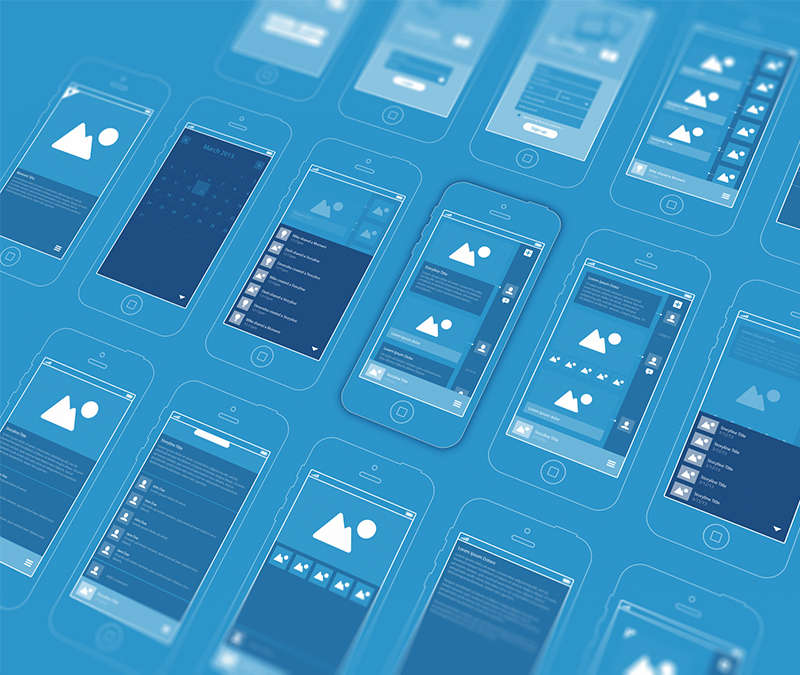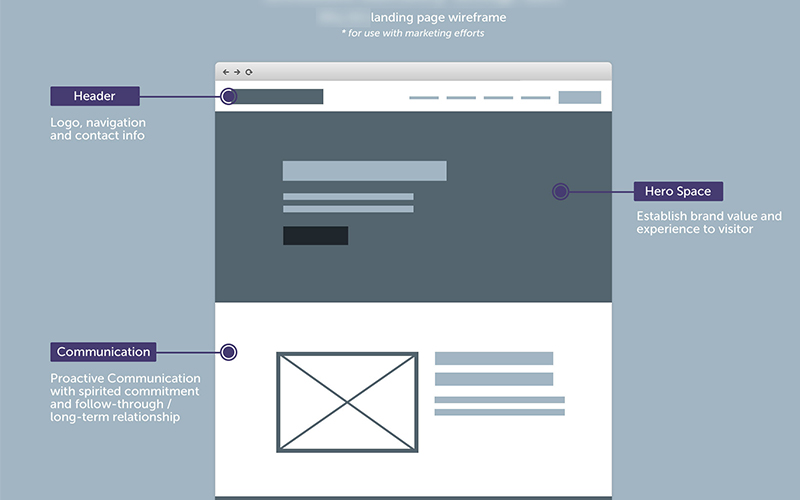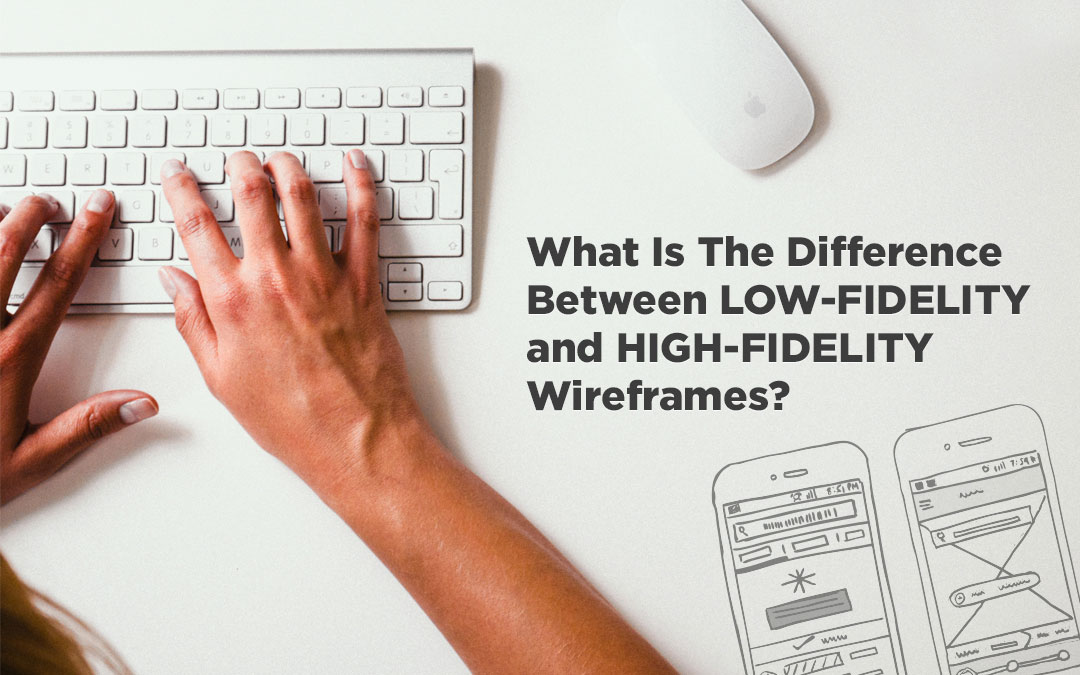In this article, we shall be delving deep onto some features of wireframes and set some of your doubts straight, but before we proceed, let us get back to the basics and shed some light on the very meaning of wireframing for the readers who are still new to the dynamic world of user interface and user experience. Okay, what is ‘wireframe’? Wireframing is a very crucial stage in the screen design process.
Understood As The Design Blueprint

It can be understood as the design blueprint for any interface, be it an app or a website. Now, if I ask you to get on with brick and mortar to build a house sans any plan, you will be left in bewilderment. How is it even possible? Similarly, you can’t maneuver with pixels or build the blocks of code, if there isn’t a method to light up the fire of creativity. The prime purpose of a wireframe is to give out a structure of design so as to carve a layout that best gives the direction to the user with the help of information which provides a thorough understanding and proper navigation of an interface. The wireframing stage is indispensable as it gives the designer an idea about the layout and user interactions without being overwhelmed with all the colors, visuals and above all, ‘design’.
A low-fidelity wireframe won’t detail on typeface choices or copy. But more on that later. For now, just remember that the wireframe is a black and white blueprint that elaborates on functionality, enabling the designer to go ahead with the paint. Wireframing, truly, chalks out new ideas, pinpoints potential areas and conveys thoughts and solutions to clients and teammates. Below are some points that describe the importance of wireframing in our designs:-
The Right Start
Moving on, as we know a wireframe is a blueprint, let us now unveil its importance:-
- The blueprint is a good source to reveal an interface’s information display. It reflects a link between pages, screens and shows the related paths a user will need to navigate the interface.
- Next, a wireframe is undoubtedly a systematic presentation of the information. You will see that all the content is given either in the form of a table, or bulleted list. Pictures are presented as squares or all user profile images are shown in a circle. These constant depictions actually become a visual language that a user subconsciously becomes comfortable with and even gets at ease in digesting such information.
- The best and the most significant aspect of the wireframe is that it is helpful in prioritizing the content. It is the wireframing step in which the designer decides how much space is to be given to each item and what is the place that is best suitable as per the visual hierarchy.
Now, as we are done with the fundamentals, let us shoot the main subject, that is, low and high- fidelity wireframes. At the time of making wireframes, you have various options such as using low-fidelity designs that are just scribbling on paper, drawing on a whiteboard, or even employing software to craft simple diagrams.
There is another option too; use high-fidelity mockups that are more refined and generally consist of quite a number of elements example, a logo, color scheme, images and other required graphics. As a game player in design, you ought to know about all the parameters of high fidelity and low fidelity wireframes, so here is something to fill in your design knowledge:-
Low-Fidelity Wireframe

As said earlier, wireframes can be created in a lot of ways like paper sketches, computer drew images, etc. At HealXRlabs, we abide by speed and accuracy and adopt the best approaches for our clients. As the name suggests, low-fidelity wireframes are quick to make and are an excellent tool to enhance team communication in a project.
Low-fidelity wireframes are kind of a starting point for a designer’s mindset to work on a layout as well as a content writer’s thoughts on content length and hierarchical frame. They provide a simple picture by way of organized blocks that show space allocated for an image and mock content (lorem ipsum) used to get a rough estimate of the length of different content blocks.
- This stage follows after the site map step.
- Displays the layout and hierarchy of items.
- Gives out dummy content (lorem ipsum).
- It is surely an ideal ‘brain dump’ of organizational ideas.
- Comprised of black and white shapes.
Pros
- They are very fast and cheap to produce.
- Low-fidelity wireframes can be easily changed to meet your needs and can even be discarded just to start from scratch.
- As they are less formal, you can receive better client feedback which is actually best for the starting point of the project. When something is less formal in presentation it is easier to criticize such work as compared to a high-quality mockup; people don’t want to hurt a designer’s feelings.
- Everyone starts thinking on the same lines for the functionality pieces of the project.
- It might look simple, but the plus is that it will not intimidate the client. At this step, they might feel more relaxed in expressing themselves as it is less permanent.
Cons
It might run-down on looks, but isn’t it just the first draft, right?
High-Fidelity Wireframe

On the other hand, high-fidelity wireframe has more realistic content, specific typeface choices and can even give out particular information on image dimensions and also on button styles. You can also play with the hues of gray rather than choosing the stereotypical black and white so as to display subtleties in contrast that will come out once the color is used, make the navigation innovative and think of joining interfaces in a space where color does not pose any clash.
So, in other words, the designers can visualize the life of the site before taking into consideration color and imagery. In this stage, you enhance the wireframe a little more than its standard hierarchical benefits, bringing in view the life-like qualities of design at the same time not moving away from the focus of function.
- It follows a low-fidelity wireframe in design
- It has more specifics included, dimensions are given and you can have the typeface choices too.
- You use grayscale instead of black and white
- Consists of actual content, if not more still the headlines and subheads are there
- Serves as the middle ground between the initial idea and final design
Pros
- The polished look itself speaks for the time devoted to it and appears to be done. It is helpful in providing a clear idea as to how the interface will look and work.
- If it meets the criteria of the client in the first go, without going through the low-fidelity wireframe first, they will be really impressed.
- There are a lot of programs that look after high-fidelity renderings and thus, make it less time-consuming than it used to be.
Cons
- In spite of the programs that guarantee fast high-fidelity wireframes, still, it demands more time than low fidelity.
- They are expensive to produce.
- High-fidelity wireframes are very complex for the clients to understand especially the ones who aren’t technically advanced and they struggle to gauge the difference between an interactive mockup and the full final application.
- The major drawback is that if the client is not satisfied with this wireframe, you have to start from the beginning, which is a sheer waste of time and money. This time can be better utilized in crafting a low-fidelity wireframe from the start.
Okay, now the big question. So, which is the best approach to wireframing? Well, neither. It is governed by the scope and relevance of the project you have undertaken. You must evaluate your goals at the time of creating wireframes. Consider- Are they for you or to be shown to your clients or team members? Can low-fi work or will high-fi meet the criteria only? What is the state of resources in terms of both time and money?
Note, it is not compulsory to stick onto one approach only; you can begin with low fidelity wireframes and gradually move on to more detailed and practical mockups as you iteratively refine the design. Don’t get stuck with the type of approach to be used as wireframes are just a design tool to help you speedily test varied ideas, deal with potential areas and finally come up with a robust design solution.
Conclusion
High or low- fidelity wireframes is very much the call of the project. Although, it is seen that low-fidelity wireframes work best for the process as they extract better feedback from the team and helps to modify the product into a high-fidelity wireframe that can be further presented to the clients. Through this, the clients will not only get an overview of user interaction with the site but will also get to see a more life-like display of what a site will finally look like.
Even though there are no colors and images in the scene, still the typefaces and actual content can enable the clients to view their brand in the wireframe and help them to visualize where the designers are heading. Remember whatever be the style, it is the user experience that matters the most! Wireframing is just a step to take you closer to providing the best solution ever for your end-user.



